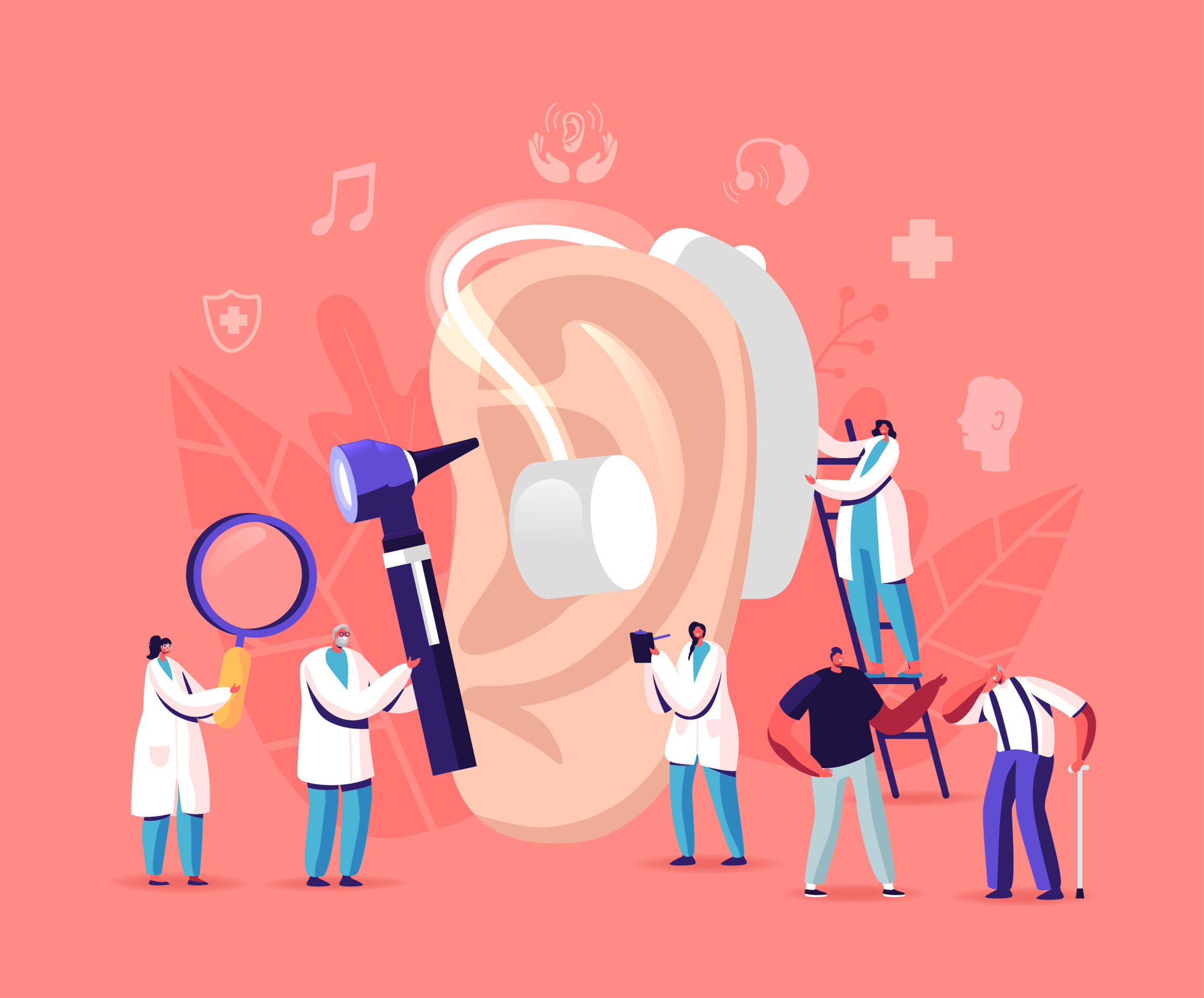ASOURCE®NAVI

公開日:2025.09.08
近年の研究により、加齢性難聴が認知症発症の最大の「修正可能因子」であることが判明し、予防策として補聴器の早期使用に注目が集まっています。難聴は75歳以上の高齢者の約7割に見られるものの、多くの方が「年齢によるもの」と考え、適切な対応を取らないのが現状です。しかし、聴覚と認知機能は密接に関連しており、聴力低下が認知症リスクを高める要因となることが明らかになっています。本シリーズでは、補聴器の重要性について2回にわたり解説します。 第2回では、補聴器選びのポイントや公的支援制度など、具体的な行動につながる情報をご紹介します。補聴器は一人ひとりの聴力状態やライフスタイル、予算によって最適な選択が異なります。自分に合った補聴器を見つけることで、聞こえの改善だけでなく、認知機能の維持にもつながります。
補聴器には形状や機能によって様々な種類があり、それぞれに特徴があります。適切な選択には各タイプの特性を理解することが重要です。
耳かけ型補聴器は、補聴器本体を耳の後ろに装着するタイプで、BTE型とRIC型の2種類に分けられます。BTE型は音を導入するチューブを外耳道に挿入し、RIC型はレシーバーを直接耳内に配置します。操作性が良く電池寿命が長いため、軽度から高度難聴まで幅広く対応できますが、サイズが比較的大きいため視認性が高くなる傾向があります。
耳あな型補聴器は、個々の耳の形状や聴力に合わせたオーダーメイドの補聴器で、耳の穴にすっぽり収まります。コンパクトで目立ちにくいのが最大の魅力ですが、装用感には個人差があり、耳の形状によってフィット感が異なります。主に軽度から中等度の難聴に適していますが、小型設計に起因する音の増幅限界やバッテリー容量の制約から、重度難聴への対応が難しい場合があります。
ポケット型補聴器は、補聴器本体をポケットなどに収納し、コードでイヤホンと接続するタイプです。操作が簡単なため、高齢者や手先が不自由な方に適しています。価格が比較的安価で最大出力が高く、特に重度難聴者向けのモデルが豊富です。ただし、コードの取扱いには注意が必要であり、衣擦れによるノイズが発生する可能性があります。
補聴器選びで重要なのは、高価格や高性能な機種を選ぶことではなく、個人の耳に適した機種の選択と調整です。
機能面では、補聴器にはデジタル式とアナログ式があります。現在販売されている補聴器の多くはデジタル式で、音をデジタル信号に変換して処理するため、環境に応じた細かな調整が可能です。一方、アナログ式は単純な増幅のみであり、現在では少数派となっています。
また、「補聴器」と「集音器」は異なるものです。補聴器は医療機器として認可されており、個人の聴力に合わせた調整が可能ですが、集音器は単に音を大きくするだけで、聞こえの質を向上させるものではありません。
補聴器を装用する前に、まず、耳に何らかの治療が必要な病気がないのか、補聴器を安全に使用することができるのか、耳鼻咽喉科での診断を受ける必要があります。その上で、聴力検査を受けます。オージオグラム(聴力図)をもとに、どの周波数でどの程度聞こえにくいかを把握することで、最適な補聴器を見つけることができます。
補聴器の価格は幅広く、片耳あたり約3万円の低価格モデルから、先進機能を備えたデジタル補聴器では50万円を超えるものまであります。
なお、条件を満たせば公的な助成制度を利用できる場合もあります。たとえば、聴覚障害により身体障害者手帳(原則として4級以上)を取得している方は、障害者総合支援法に基づく補装具費支給制度の対象となり、原則として自己負担は1割で済みます。
さらに、18歳未満の軽度・中等度難聴児に対する助成制度や、高齢者向けに自治体が独自に設けている補聴器購入費の助成制度もあります。これらの制度は自治体によって対象や内容が異なるため、事前に確認しておくことが大切です。公的な支援とは別に、補聴器の購入代金は、確定申告で医療費として申請し、医療控除を受けることが可能です。
補聴器を購入する際は、試聴が可能な施設を選ぶことが重要です。具体的には、専門の知識・技能を持った信頼できる「補聴器技能者」がいる補聴器専門店や病院の補聴器外来、日本耳鼻咽喉科頭頸部外科学会が「補聴器のエキスパート」として委嘱している補聴器相談医のいる医療機関などが挙げられます。
補聴器は装着するだけでは十分な効果を発揮しません。最適な聞こえを実現するためには、個人の聴力特性に応じた精密な初期調整が不可欠です。専門家による調整では、聞こえにくい音域に特化した細かな設定調整を行い、実際の装用状態での聴力測定を通じて効果を確認します。多くの場合、1〜2週間の試聴期間が設けられており、この期間中に日常生活での使用感を十分に確認することができます。試聴中に聞こえにくさや過度な音の大きさなど、何らかの問題を感じた場合は、遠慮なく再調整や機種変更を依頼することが重要です。装用感や音量に違和感がある際も同様に、納得できる状態になるまで調整を重ねることで、補聴器の真価を引き出すことができます。
補聴器選びは、一度きりの買い物ではなく、聞こえの改善を通じて生活の質を向上させるための継続的なプロセスです。専門家のアドバイスを受けながら、自分の聴力状態やライフスタイルに合った補聴器を選ぶことが大切です。補聴器の早期装用は、認知機能低下の予防にも寄与すると考えられています。聞こえの問題を放置せず、積極的に対策を講じることで、充実した日常生活を取り戻しましょう。
メディアスグループは、医療機器の販売を中心とした事業を展開しています。医療に携わる私たち(Medical+us)は、医療現場や人々の健康的な明日へ役立つ情報をお届けする情報発信源(Media)の役割も果たしていきたいと考えています。